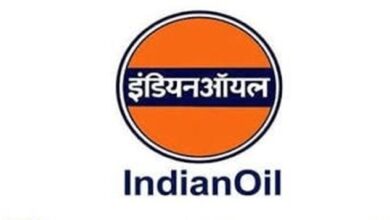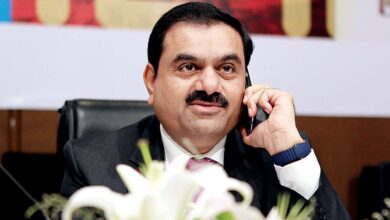The serious issues with India’s new macroeconomic balance- the gap between savings and investments

The serious issues with India’s new macroeconomic balance- the gap between savings and investments
The list of struggles standing forth the Indian economy is not exactly very short, but while we keep ourselves engaged with these short run innuendos, we are overlooking a very serious problem that may avert the long run growth rate of the country, and change its development trajectory, much likely for the worse.
Before I comment on the nature of the problem, allow me to create a base to establish how the two ends mentioned in the title of this discussion actually meet through the most basic macroeconomic theory revolving around the growth rate of a country, given by Harrod Domar model.
Savings-
Primarily, an economy runs on two basic principles from the viewpoint of a consumer- consumption and savings. For a very long period post the COVID-19 crisis, the private discretionary consumption expenditure of the country has been on a disappointingly low level. Even though the numbers for this index have still not recovered entirely, the recent festive season brought hopes of recovery in consumer confidence, and thus, consumer spending.
On the production end, however, things have taken pace primarily due to the upliftment of mobility restrictions and more so due to global demand, and secondarily due to domestic demand for both consumer and capital goods. While we talk of recovery in the production, it is endogenously assumed that the recovery in the income levels of households too has come along, for the revenue from production is appropriated to the rental income of factors of production.

This sheds light on a very important cause- even though income recovery has taken and is currently taking place, consumption recovery is yet to see any significant improvement. Particularly, there’s a gap between what is received and spent, the extent of which keeps increasing and decreasing due to different circumstances, and income levels.
The economic theory explores this concept under the intertemporal choice problem, where it understands consumer patterns between current consumption and future consumption, based on a number of behavioural parameters, and discount factors.
Due to increased uncertainty and a loss of savings in the pandemic period, people have diverted their intertemporal preferences away from current consumption and towards future consumption, showing a precautionary motive to save. Again, as we move towards recovery, this motive would seem to come off a little, but for now, we are still to see many diversions.
When people switch their consumption choices towards future consumption, it means that they are increasing the proportion of income being saved. Now, savings are done either through depositing money in a bank account, stock markets, asset purchases, or similar things of the sort, especially considering that the number of bank accounts under the Narendra Modi government has increased fairly.
Now, these savings can be seen as a leak from the macroeconomic circulation of a country, and thus, a balance is achieved when the amount of these savings is met by the investments that are thus made by the firms.
Investment-
Investment is the second half of the conversation that we are interested in titillating.
The savings that households undertake create a pool of funds from which firms create demand for capital goods. This demand for capital goods is what we refer to as the act of investment. By entering a new business, expanding a current business, or by replacing worn-out capital, firms undertake investment and create demand for capital goods in the economy.

The funds for this are made available to the firms through banks, individual loans, governments, and the stock markets. These capital goods add to the productive capacity of the firm, endow the country with an increased set of resources, and expand its production capacity in the long run, directly determining the pattern for growth of the country.
Note, however, that without initial availability of savings, it would not be possible to invest, and thus, expand. This link between savings and investment create a way for the macroeconomic balance of the country and are two direct contributors to the growth of the country.
Macroeconomic Balance-
A macroeconomic balance is struck when the leak of income in the form of savings is filled by investors stepping up with their demand for capital goods, i.e., investment.
Now, let’s talk about what the current situation looks like. As explained, savings by households have increased widely for the country, as can be witnessed from the booming stock markets and the increased deposit rates in Indian banks. To quantify these numbers, note that the share of CASA deposits increased to 43.7 per cent in March 2021, and Sensex recently crossed the historic 60,000 point mark in September 2021.
But the thing is, these savings just make available the fund of pools that firms can use to undertake investment. A macroeconomic balance is struck, however, when they actually do it, which doesn’t really look like the case right now. Here’s how-
A steady look at the data released for June 2021 of scheduled commercial banks show that credit growth slowed to a disappointing 5.8 percent, against 6.2 percent that was recorded in the same period a year back. This was shown as a result of the bleak lending to industry, which, otherwise accounts for the highest share in bank lending, and is a prominent sign of the country’s investment health.
Not just that, it can also be seen from the same record when undertaken through a sequential comparison that credit growth plunged from 6 per cent as of May, to the said 5.8 per cent in June, both as a result of the contracted discretionary demand being witnessed as a result of the uncertain economic and social environment, and lack of initiative of firms’ part to undertake asset investment due to fairly fragile business positions. The key takeaway that can be observed in absolute terms of the gross bank credit, including both food and non-food growth, stood at INR 108.4 lakh crore by the end of first quarter of this fiscal year.
As for industries, credit growth contracted by 0.3 per cent as against 2.2 per cent growth in June 2020, while in the preceding months of April and May it stood at 0.4 per cent and 0.8 per cent, respectively.
Pay attention also to the industry segment that would have seen tremendous degrowth had it not been for the Emergency Credit Line Guarantee Scheme announced by the government as a part of the first and then consecutive fiscal stimulus packages for micro, small and medium enterprises. The said scheme aided overall credit growth to the economy, allowing credit to medium inustries to grow at 54.6 per cent rate by the end of the first quarter of this fiscal year, in comparison to 9 per cent in the same period last year.
This begs the question- would the case for other industries also be different if similar initiatives from the government’s side were observed for them during their volatile stages in the pandemic? I guess it requires a detailed discussion of its own, given the problem we’re witnessing with the balance of savings and investment right now.
Similarly, credit growth to micro and small industries rose 6.4% in June against a contraction of 2.9% a year ago. However, the high-rated firms took advantage of the prevailing low-interest rate regime and borrowed from the market to pay off some of their high-cost bank credit. Credit to large industries contracted by 3.4% in June as compared to a growth of 3.6% a year ago. Of the total 36 sectors and sub-sectors, 19 saw a de-growth compared to the pre-second wave period of March.
This remains true even when the bank interest rates are record low due to their accommodative monetary policy, which, in usual cases, is an incentive for firms to undertake higher investment due to lower future cost of repayment.
Not only credit demand, but capital formation has also taken a back seat since a large number of India Inc. companies have embarked on their deleveraging patterns. And while the data presented talks about June of this year, the situation remains equally grim three months later too.
This is explanatory of the impending crisis in the country’s macroeconomic stability and growth trajectory in the long run, and if we continue to overlook this pattern, it would not only hurt the country’s pattern in the short run would also have a significant negative impact on their productive capacity in the future.
For a developing country, savings and thus, investments, act as very important instruments of economic growth, along with capital productivity. Given India’s capital productivity has not improved on par with its ideal trajectory, it is imperative that investments take the front position and improve the country’s economic position, both today and in the future.
Note also that while we talk of these parameters as influencing economic growth, they, in turn, themselves are impacted by economic growth, i.e., are endogenous to the model. Therefore, if the government takes even any temporary policy action that significantly improves investment in the current period, the economic growth attained as the result would automatically take care of improved investment in the future. It’s time that we get serious about this threatened macroeconomic balance and the current economic fragility, for this “handle as it comes” approach is not doing the country any good.






